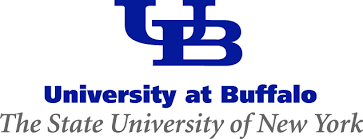rifampicin
See the following -
Antibiotic Resistance Doesn't Just Make Bacteria Harder To Kill – It Can Actually Make Them Stronger
 Bacteria can become drug-resistant in two ways – resistance can be natural, meaning that the genes conferring resistance are already present in the bacterial chromosome, or they can be acquired through mutation or by picking up antibiotic-resistance genes from other microbes. It is now possible to use new DNA-sequencing technologies to take a closer look at how the antibiotic resistance can make some bacteria weaker or stronger. And in a new study, we found that – contrary to conventional wisdom around antibiotics – resistance can actually make some bacteria fitter and even more virulent.
Bacteria can become drug-resistant in two ways – resistance can be natural, meaning that the genes conferring resistance are already present in the bacterial chromosome, or they can be acquired through mutation or by picking up antibiotic-resistance genes from other microbes. It is now possible to use new DNA-sequencing technologies to take a closer look at how the antibiotic resistance can make some bacteria weaker or stronger. And in a new study, we found that – contrary to conventional wisdom around antibiotics – resistance can actually make some bacteria fitter and even more virulent.
- Login to post comments
Last Mile: A Matter of Life and Death
 Access to essential medicines is not only about the development and cost of pharmaceuticals but also supply chain logistics. The "last mile" plays a particularly important (and challenging) role in low- and middle-income countries, such as Uganda. Industrial and systems engineering research reveals major disparities in access to essential medicines. Although Malaria accounts for 50% of a country's morbidity and mortality, some districts only have 50% of public health facilities with regular supplies of therapies...
Access to essential medicines is not only about the development and cost of pharmaceuticals but also supply chain logistics. The "last mile" plays a particularly important (and challenging) role in low- and middle-income countries, such as Uganda. Industrial and systems engineering research reveals major disparities in access to essential medicines. Although Malaria accounts for 50% of a country's morbidity and mortality, some districts only have 50% of public health facilities with regular supplies of therapies...
- Login to post comments
New Path for Drug Development
The 1960s was a decade that witnessed humans setting foot on the moon and a bloody war that changed the history. In between these events, a drug that would be the mainstay for doctors for decades to fight a smart bug, was born. Rifampicin was the last novel class of antibiotics against Mycobacterium tuberculosis till the arrival of bedaquiline at the fag end of 2012. Discovered in 1965, Rifampicin was marketed in Italy in 1968 and was approved by the US regulatory body in 1971...
- Login to post comments